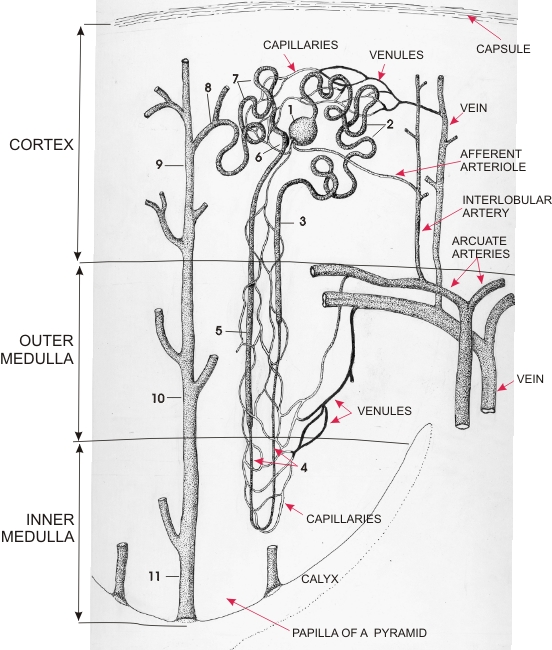 |
The following are the components of the nephron and collecting ducts (numbered from 1 to 11):
- Renal corpuscle
- Proximal convoluted tubule
- Thick descending limb of Henle’s loop
- Thin descending and ascending limbs of Henle’s loop
- Thick ascending limb of Henle’s loop
- Macula densa
- Distal convoluted tubule
- Junction with other distal convoluted tubules
- Cortical collecting ducts
- Medullary collecting ducts
- Papillary duct, that is, the large collecting ducts (of Bellini) opening at the tip of the pyramid
The branching of the interlobar arteries, that is, the arcuate arteries, is continuous with the cortical radial arteries directed toward the capsule. From these, smaller afferent arterioles reach the renal corpuscle at its vascular pole. Within the corpuscle of the nephron the arteriole splits into capillaries. These capillaries unite to form an efferent arteriole that leaves the corpuscle at its vascular pole (see Figure 13.8). These arterioles carry blood to other capillary networks that surround the lubules and ducts of the cortex. These networks are drained by postcapillary venules that reach the veins that accompany the radial and arcuate arteries. Other branches of the efferent arteriole subdivide into networks of capillaries in the medulla. These surround the tubules of the nephrons and ducts before returning the blood to the veins that accompany the arcuate and interlobar arteries.
|
